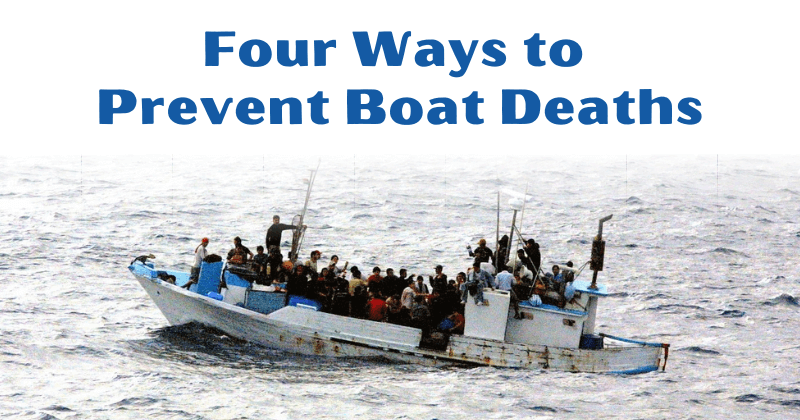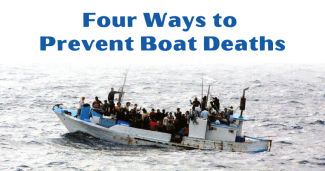Four Ways to Prevent Boat Deaths

At least 81 people died, and hundreds more are missing, after an overburdened migrant boat listed and sank in the Mediterranean Sea last week. Up to 750 people were aboard, and only 104 people have been rescued. The scale of this tragedy is massive. Across many nations – Pakistan, Afghanistan, Syria, and elsewhere – families are waiting for word, steeped in the fear that their loved ones died while seeking a safer, more secure life. Their family members’ deaths were preventable.
Migration is growing, both within borders and across borders – and systems to assist displaced people are woefully unprepared. In many countries, governments are unwilling to prepare. Yet, no lives need to be lost. Here are four basic steps to prevent the next migrant tragedy:
- Create safe migrant pathways. This doesn’t mean creating an “open border.” Safe pathways do not give a free pass to anyone who wants to enter a country without an immigration hearing or asylum process. It simply means that when a person is migrating, their basic human rights – including life, liberty, security, equality, freedom of movement, and the right to seek asylum – are protected. Migration is a human response to unsafe conditions. Governments must provide fair, orderly, and humane access to asylum. Programs like Health Network assist in ensuring the basic needs of migrants are met. Such programs need to be recognized and expanded.
- Prevent migration through humanitarian aid that recognizes and addresses root causes of instability. The best and most effective way to prevent migrant deaths is to prevent migration. People flee only when they feel in danger, when they are no longer safe or secure at home. Many migrants feel they have no choice but to move. The pressures of war, violence, political instability, food insecurity and poverty can be reduced with sufficient and well-placed humanitarian aid so that people can choose to stay safely with their families in their resilient communities.
- Prepare for climate change-fueled migration. In the last six weeks, half of all people in the US experienced extreme weather; the North Atlantic saw shocking record warming; at least 96 people have died over several days of extreme heat in India and Pakistan with temperatures expected to reach 122 degrees Fahrenheit. Mexico, China, and Europe are also experiencing extreme weather this week. As climate change progresses, more people will be forced from their homes. For many, a climate crisis-fueled disaster compounds the preexisting determinants that destabilize their lives. CNN’s report on a Pakistani community in the Kashmir region of 12,000 that had 22 people unaccounted for in this tragedy mentioned poor work opportunities and inflation as motivations to migrate; it declined to note that almost 70% of the Kashmiri population directly or indirectly is employed in farming, and climate change has rapidly disrupted seasonal cycles and glacial melts, with spring flooding followed by devastating dryness in the summer, leaving farmers with no food for their families last year. Governments are not meeting the needs of migrants today, and have not begun to prepare for climate migrants in coming years, predicted to number from 216 million to over 1 billion people.
- Take climate change seriously. Just as we need to provide humanitarian aid to stabilize communities so that people do not have to migrate, we need to stabilize our planet so that we reduce the number of disasters that drive people to flee. We must urgently shift our economies away from fossil fuels. The climate crisis, the biggest emergency we have yet faced, that will spawn the greatest number of migrants if left unchecked, must be met with powerful and immediate action.
- Log in to post comments





